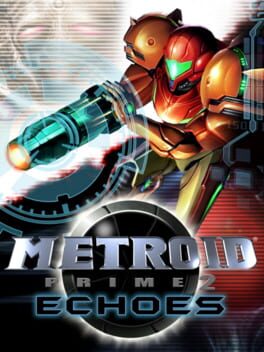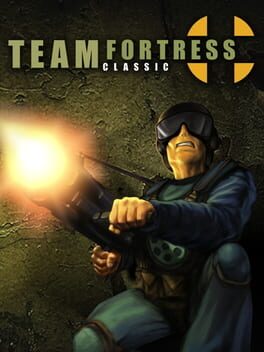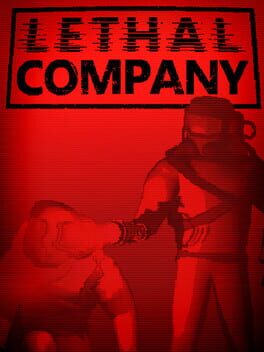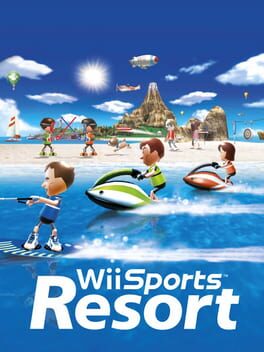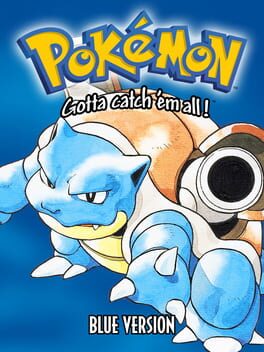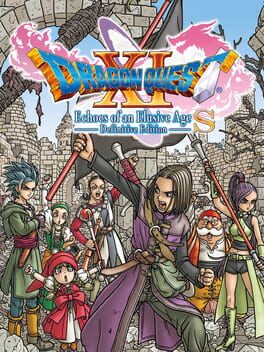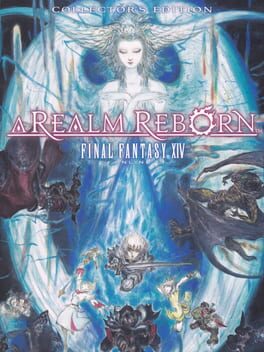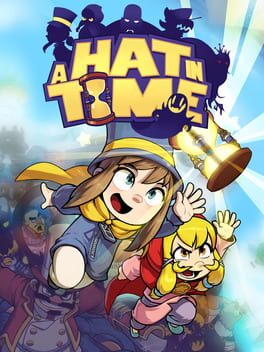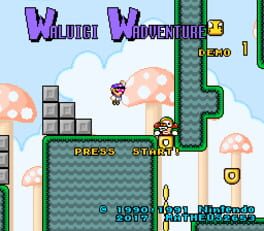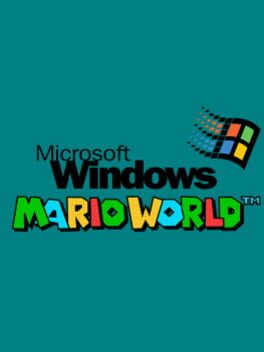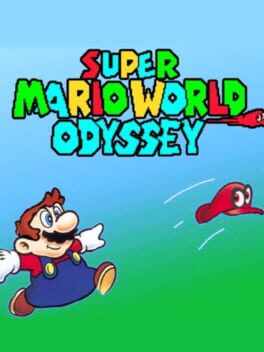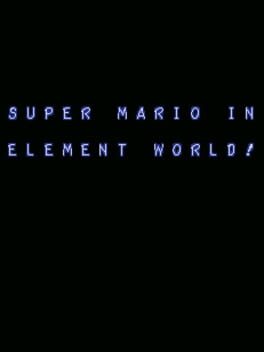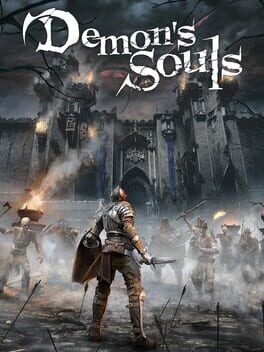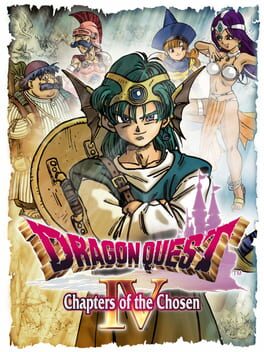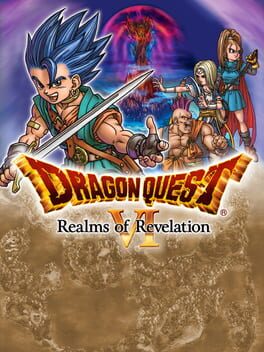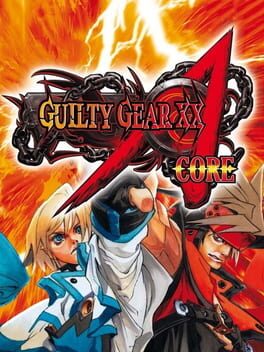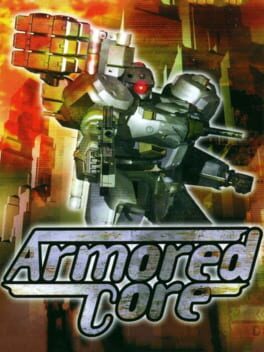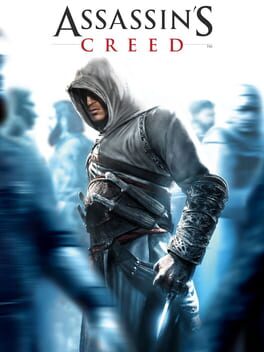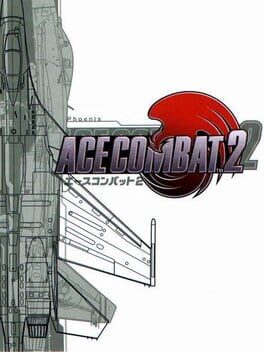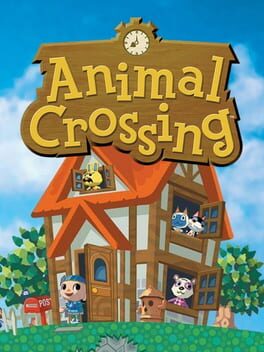moth
49 reviews liked by moth
“Wait for it to start doing its spin attack. Switch to Morph Ball. Boost Ball into it while it's spinning to stun it. While it's stunned, roll between its legs, and lay a bomb on its flashing weak point. When the body is destroyed, the head flies off and starts attacking. The head will have a light or dark shield; switch to the opposite colored beam to dispel it. Then you can use a Super Missile to destroy the head.”
This is me describing how to kill a Normal Non-Miniboss Enemy in one of the late game areas of Metroid Prime 2. I swear to god every fucking enemy is like this. God forbid you design an FPS enemy where the optimal strategy is “shoot it until it dies”; it always has to be some five step process to make then enemy vulnerable, then you have a half second window to shoot them (from just the right angle, of course) and finally deal Real Actual Damage.
Of course, even with all that, many enemies take three or four Super Missiles to kill. So now every encounter takes a full minute to finish, and often they’ll put three or four of these fuckers in the same room. So of course I run past every single enemy I can, because combat is a miserable ordeal with no reward, and I’ve already been through this room seven times anyway, god fucking dammit.
Don't you dare use anything besides Super Missiles or maybe the occasional charged light/dark/annihilator beam. I can't think of an FPS with a more pathetic default gun. There's almost never a good reason to use any of the non-charged shots against enemies. I counted the number of regular beam shots an extremely piddily enemy took later on -- 26 hits! What's even the point of having a beam at that point? Where are the popcorn enemies? Why is everything a painfully involved miniboss? Why do the beam combos cost so many resources when I never found a single practical use case for any of them?!
While I don’t think the combat works at all for the regular enemies, I think there’s a perverse rom hack joy to the bosses. They have all the same problems and jank as the enemies, but multiplied several times over. Every major boss is a 10+ minute encounter, and because the timing to dodge enemy attacks is much stricter here than in Prime 1, they often come down to the wire. The thing is, once you’ve beaten a boss, it’s over. And you’re generally rewarded with a cool power-up! The regular enemies are miserable because the game expects you fight them over and over for no reason. The bosses don’t have that problem.
All my most memorable moments in Prime 2 were barely scraping by at the end of the painfully long boss fights. I beat the Spider Guardian on my first try with 10 total energy to spare. If I'd taken a single additional hit, I would've died and had to start the whole grueling trial over again. The release I felt nailing each of those super-strict bomb jumps and defeating the boss was orgasmic.
The finale is epic. The Ing Emperor’s second phase is the scariest fight in the game outside maybe the Boost Guardian, and after barely scraping by that fight you still have another timed boss fight to deal with, one that’s exceptionally confusing and opaque in its execution even by this game's standards. All without any checkpoints of course. No notes, pristine conclusion.
The best thing you can say about Metroid Prime 2 is that it’s a weird, obnoxiously strict, rom hack-y sequel to Metroid Prime 1. Prime 1 was polished, streamlined, and generally pretty easy. It’s a good game that definitely called for a sequel that’s annoying in the ways Prime 2 is annoying.
Prime 2 is far too long, and the story is contrived videogame bullshit in contrast to Prime 1’s gracefully unfolding mystery. Calling it an FPS feels unfair because it invites comparisons to games where the combat is actually fun. But it has some good tunes, and in spite of (and sometimes because of) its myriad failings, it still takes you on a journey that feels substantial. There’s a catharsis to reaching its hard-won conclusion.
I definitely don’t think Retro is the best to ever do it, and I’m in no rush to revisit Prime 3. But they make games that feel like real adventures, and that’s something I’ll always appreciate.
This is me describing how to kill a Normal Non-Miniboss Enemy in one of the late game areas of Metroid Prime 2. I swear to god every fucking enemy is like this. God forbid you design an FPS enemy where the optimal strategy is “shoot it until it dies”; it always has to be some five step process to make then enemy vulnerable, then you have a half second window to shoot them (from just the right angle, of course) and finally deal Real Actual Damage.
Of course, even with all that, many enemies take three or four Super Missiles to kill. So now every encounter takes a full minute to finish, and often they’ll put three or four of these fuckers in the same room. So of course I run past every single enemy I can, because combat is a miserable ordeal with no reward, and I’ve already been through this room seven times anyway, god fucking dammit.
Don't you dare use anything besides Super Missiles or maybe the occasional charged light/dark/annihilator beam. I can't think of an FPS with a more pathetic default gun. There's almost never a good reason to use any of the non-charged shots against enemies. I counted the number of regular beam shots an extremely piddily enemy took later on -- 26 hits! What's even the point of having a beam at that point? Where are the popcorn enemies? Why is everything a painfully involved miniboss? Why do the beam combos cost so many resources when I never found a single practical use case for any of them?!
While I don’t think the combat works at all for the regular enemies, I think there’s a perverse rom hack joy to the bosses. They have all the same problems and jank as the enemies, but multiplied several times over. Every major boss is a 10+ minute encounter, and because the timing to dodge enemy attacks is much stricter here than in Prime 1, they often come down to the wire. The thing is, once you’ve beaten a boss, it’s over. And you’re generally rewarded with a cool power-up! The regular enemies are miserable because the game expects you fight them over and over for no reason. The bosses don’t have that problem.
All my most memorable moments in Prime 2 were barely scraping by at the end of the painfully long boss fights. I beat the Spider Guardian on my first try with 10 total energy to spare. If I'd taken a single additional hit, I would've died and had to start the whole grueling trial over again. The release I felt nailing each of those super-strict bomb jumps and defeating the boss was orgasmic.
The finale is epic. The Ing Emperor’s second phase is the scariest fight in the game outside maybe the Boost Guardian, and after barely scraping by that fight you still have another timed boss fight to deal with, one that’s exceptionally confusing and opaque in its execution even by this game's standards. All without any checkpoints of course. No notes, pristine conclusion.
The best thing you can say about Metroid Prime 2 is that it’s a weird, obnoxiously strict, rom hack-y sequel to Metroid Prime 1. Prime 1 was polished, streamlined, and generally pretty easy. It’s a good game that definitely called for a sequel that’s annoying in the ways Prime 2 is annoying.
Prime 2 is far too long, and the story is contrived videogame bullshit in contrast to Prime 1’s gracefully unfolding mystery. Calling it an FPS feels unfair because it invites comparisons to games where the combat is actually fun. But it has some good tunes, and in spite of (and sometimes because of) its myriad failings, it still takes you on a journey that feels substantial. There’s a catharsis to reaching its hard-won conclusion.
I definitely don’t think Retro is the best to ever do it, and I’m in no rush to revisit Prime 3. But they make games that feel like real adventures, and that’s something I’ll always appreciate.
Rectangle hallway simulator. I feel like this 2D Mario has devolved from being anything of significance into a kind of smooth frictionless sludge that pleases you for 6 hours before you forget the experience entirely, a little like binging on Instagram reels. And when the game does show you a point of friction and you die or fail it feels like a glitch in the system...
truly one of the games ever made where in order to truly grasp it, you had to experience it during its peak time era it was a part of. the peak was around 1999 - 2007 (a period in which i was only a child for, and an era of the internet so long gone), but the memories that were made from said experiences live on forever for me. this review includes tfc primarily, however half-life and half-life mods and its official titles in general are also looped into this as well. half-life had perhaps the best modding scene, and functioned kinda like how newgrounds was just the wild west of flash creation. people often made custom maps and servers just for their friends that operated almost as a social hub in a way. from when i played, these games served almost comparable to something like vrchat. no, seriously. people actually roleplayed on this game and in general just hung out with friends in teamspeak / irc chats. all over tfc. but yes obviously, the game was designed as a team deathmatch experience.
fun maps in tfc are truly admiring, i rank this game on this merit alone highly. the co-operative experience of playing on a laggy server with your friends and dying a lot trying to solve the most minuscule task is hilariously brutal and beautiful simultaneously. conc jumping is a serious skill on its own and IS one of the most intense movement skillsets ever created. however the real game itself is admittedly a tad lackluster. but it plays a lot different than team fortress 2 so "don't get it twisted" by comparing the two. watch any competitive game to get what i mean. nowadays the meta is defense heavy to where one team of CTF opts to defend, otherwise it would just be a game of movement with scouts and medics conc jumping across the map competing for the best score. still, i hold the belief that it is one of those things you need to see to believe. and no, i'm not talking about playing on some bot vs player server or whatever. the competitive scene (pick up games) still pop off today (neonlight TFC). oh and watch some frag movies, i recommend putting "before:2011" in your search feed for team fortress classic content. thanks
fun maps in tfc are truly admiring, i rank this game on this merit alone highly. the co-operative experience of playing on a laggy server with your friends and dying a lot trying to solve the most minuscule task is hilariously brutal and beautiful simultaneously. conc jumping is a serious skill on its own and IS one of the most intense movement skillsets ever created. however the real game itself is admittedly a tad lackluster. but it plays a lot different than team fortress 2 so "don't get it twisted" by comparing the two. watch any competitive game to get what i mean. nowadays the meta is defense heavy to where one team of CTF opts to defend, otherwise it would just be a game of movement with scouts and medics conc jumping across the map competing for the best score. still, i hold the belief that it is one of those things you need to see to believe. and no, i'm not talking about playing on some bot vs player server or whatever. the competitive scene (pick up games) still pop off today (neonlight TFC). oh and watch some frag movies, i recommend putting "before:2011" in your search feed for team fortress classic content. thanks
Lethal Company
2023
Wii Sports Resort
2009
Pokémon Blue Version
1996
This game is such an interesting abstraction of the Japanese cityscape and countryside: I would say it feels most not like a central-Tokyo but like it was designed by someone who lived in one of the major cities an hour or two from central Tokyo. You get the occasional dense area with a skyscraper or two (Saffron City), dense collections of single family homes (Celadon City), but there's still the countryside running through mountains and forests, farming towns here and there.
That is easily Pokemon Blue's most interesting trait: it's a world based on reality, but not in the direction of an Earthbound that's more focused on constantly parodying America or people. Pokemon Blue is a game more interested in the idea of adding a layer of mystery (world of pokemon) and exaggeration (everyone catches pokemon!) to the mundane normal everyday life. I imagine this (and the affordances of the Game Boy and the 151 pokemon, and the marketing efforts of Nintendo) is what helped to capture the minds of the initial millions of players! I'm not sure how much of that exists today, where the series feels a bit more phoned in and calculated.
It's honestly quite disturbing the extent that Satoshi Tajiri's artistic idea become full-on media-mix/anime-ified - most symbolic of this is how sprites underwent slight revisions between the original JP red/green to US red/blue to yellow to bring things 'more in line with the anime' - a direction which, I think, informs the series direction today: something that's more interested in doing only what's necessary to keep the brand going, rather than an interest in the kind of design fundamentals Tajiri/team had that allowed them to conceive of Pokemon Blue in the first place.
The story in Blue is most interestingly not at all much of an anime story. Nobody is really fleshed out except potentially Giovanni, the game feels like a series of vignettes where the sport-like Pokemon battling at times briefly overlaps with the reality of our world. Lt. Surge fought with pokemon in a war, Mew is from South America, the moon landing happened in 1969, people are addicted to gambling, there's a crime syndicate, pokemon can die and become ghosts. There's a lot of room for your imagination to think about.
I loved the underground walkways that feel like the long, underground train station walkways in Japan, or even arguably underground shoutengai (https://en.wikipedia.org/wiki/Sh%C5%8Dtengai). How the Celadon "Mansion" is a mistranslation of the Japanese Manshon (often a 5-10 story apartment or mixed use building), how it has the Game Freak devs. The department store inspired by big Japan department stores.
I think the first 2/3 of this game (through Silph Tower) is really well paced, I love how you go between countryside exploration and weird little dungeons in urban settings or caves. The last 1/3 of the game feels a bit more out of place - the 'science' angle, while interesting, kind of starts and ends with Cinnabar island. Seafoam Island and Victory Road are fine, but they feel less connected to the whole game's sense of place compared to e.g. the rocket base or mt. moon. I don't think this detracts from the strength of the game, but the game did feel like it was dragging by that point - the fact it began doing block puzzles might be symbolic of that. (Ha ha)
An aside: The core of the "trainers are multiple pokemon, random encounters are one pokemon" is a brilliant design choice - they can express trainer personality through this, they can characterize spaces like dungeons or caves based on who is there. I actually wanted to see more of the Viridian Forest-type dungeon - where not everything is a random encounter tile.
--
After playing, it does feel like the game is at a bit of a crossroads. I think Tajiri definitely had more he wanted to do with his vision, but they may not have been in-line with the more obvious routes to 'improving' the game.
The more obvious routes, to me, neither of which interest me personally, are:
- Increasing the traditional storytelling: clear villain characters, more cutscenes, more regularly paced villain-related levels. This could help attract an audience put off by the way Pokemon Blue feels like falling into a story at times (which I personally prefer, haha). It would also increase franchise tie-in and business synergies!
- Making the battle system 'better' and not a pushover. Make the game more technical, increase training options, create harder battles or challenges - as this would be the only way to 'balance' the game from becoming too easy. This lays a lot of weird traps though, and I think pokemon's devs fell into most of them: stark divides between the 'true combat postgame', many compulsive traps around perfecting stats/builds (rather than letting you teambuild freely), etc.
Personally I would have liked it if the game went harder on the weird influences and level layouts, maybe experimenting with a smaller level range or different methods of training other than bland 'QoL' features to help even leveling... but hey! I'm not the billionaire company here...
That is easily Pokemon Blue's most interesting trait: it's a world based on reality, but not in the direction of an Earthbound that's more focused on constantly parodying America or people. Pokemon Blue is a game more interested in the idea of adding a layer of mystery (world of pokemon) and exaggeration (everyone catches pokemon!) to the mundane normal everyday life. I imagine this (and the affordances of the Game Boy and the 151 pokemon, and the marketing efforts of Nintendo) is what helped to capture the minds of the initial millions of players! I'm not sure how much of that exists today, where the series feels a bit more phoned in and calculated.
It's honestly quite disturbing the extent that Satoshi Tajiri's artistic idea become full-on media-mix/anime-ified - most symbolic of this is how sprites underwent slight revisions between the original JP red/green to US red/blue to yellow to bring things 'more in line with the anime' - a direction which, I think, informs the series direction today: something that's more interested in doing only what's necessary to keep the brand going, rather than an interest in the kind of design fundamentals Tajiri/team had that allowed them to conceive of Pokemon Blue in the first place.
The story in Blue is most interestingly not at all much of an anime story. Nobody is really fleshed out except potentially Giovanni, the game feels like a series of vignettes where the sport-like Pokemon battling at times briefly overlaps with the reality of our world. Lt. Surge fought with pokemon in a war, Mew is from South America, the moon landing happened in 1969, people are addicted to gambling, there's a crime syndicate, pokemon can die and become ghosts. There's a lot of room for your imagination to think about.
I loved the underground walkways that feel like the long, underground train station walkways in Japan, or even arguably underground shoutengai (https://en.wikipedia.org/wiki/Sh%C5%8Dtengai). How the Celadon "Mansion" is a mistranslation of the Japanese Manshon (often a 5-10 story apartment or mixed use building), how it has the Game Freak devs. The department store inspired by big Japan department stores.
I think the first 2/3 of this game (through Silph Tower) is really well paced, I love how you go between countryside exploration and weird little dungeons in urban settings or caves. The last 1/3 of the game feels a bit more out of place - the 'science' angle, while interesting, kind of starts and ends with Cinnabar island. Seafoam Island and Victory Road are fine, but they feel less connected to the whole game's sense of place compared to e.g. the rocket base or mt. moon. I don't think this detracts from the strength of the game, but the game did feel like it was dragging by that point - the fact it began doing block puzzles might be symbolic of that. (Ha ha)
An aside: The core of the "trainers are multiple pokemon, random encounters are one pokemon" is a brilliant design choice - they can express trainer personality through this, they can characterize spaces like dungeons or caves based on who is there. I actually wanted to see more of the Viridian Forest-type dungeon - where not everything is a random encounter tile.
--
After playing, it does feel like the game is at a bit of a crossroads. I think Tajiri definitely had more he wanted to do with his vision, but they may not have been in-line with the more obvious routes to 'improving' the game.
The more obvious routes, to me, neither of which interest me personally, are:
- Increasing the traditional storytelling: clear villain characters, more cutscenes, more regularly paced villain-related levels. This could help attract an audience put off by the way Pokemon Blue feels like falling into a story at times (which I personally prefer, haha). It would also increase franchise tie-in and business synergies!
- Making the battle system 'better' and not a pushover. Make the game more technical, increase training options, create harder battles or challenges - as this would be the only way to 'balance' the game from becoming too easy. This lays a lot of weird traps though, and I think pokemon's devs fell into most of them: stark divides between the 'true combat postgame', many compulsive traps around perfecting stats/builds (rather than letting you teambuild freely), etc.
Personally I would have liked it if the game went harder on the weird influences and level layouts, maybe experimenting with a smaller level range or different methods of training other than bland 'QoL' features to help even leveling... but hey! I'm not the billionaire company here...
dragon quest is by far my favorite series of all time, and even then i only hope i can one day love dragon quest as much as dragon quest 11 loves dragon quest. it hears everyone out there who ignorantly derides this series for every "this is too basic" criticism you could think of and simply says "even if you were right, who cares?", because dragon quest 11 is a game that adores the structure and stories of the games before while simultaneously knowing there's so much more that can and will be done with that structure going forward.
i'm really glad that i played all of the other 10 mainline games before 11, because it really does feel like a victory lap with all the little nods to the other games you notice along the way. i hope very deeply and sincerely that one day that this beautiful celebration of this momentous series's storied past will be looked upon as another step in its long history.
i'm really glad that i played all of the other 10 mainline games before 11, because it really does feel like a victory lap with all the little nods to the other games you notice along the way. i hope very deeply and sincerely that one day that this beautiful celebration of this momentous series's storied past will be looked upon as another step in its long history.
i think its incredibly interesting how the second most popular mmo of all time has such a disastrously unapproachable basegame. every time i have to engage with arr content ingame i cant help but think to myself "this was considered enough of an improvement from 1.0 to keep the game going??"
it does make sense, they wanted to take a much more story-focused approach to an mmo, and to make a story with that kind of longevity they needed to haul ass when it came to worldbuilding and laying down the foundation for a story, but that absolutely does not make those 100 or so hours any less of a slough. im glad i managed to stick with the game, later content is fantastic and i've met some great people, but oh my fucking god it is impossible to suggest to friends who arent immediately sold on the gameplay/systems outside of the story (good thing jobs below 50 are boring as fuck too............ god i hate summoner)
it does make sense, they wanted to take a much more story-focused approach to an mmo, and to make a story with that kind of longevity they needed to haul ass when it came to worldbuilding and laying down the foundation for a story, but that absolutely does not make those 100 or so hours any less of a slough. im glad i managed to stick with the game, later content is fantastic and i've met some great people, but oh my fucking god it is impossible to suggest to friends who arent immediately sold on the gameplay/systems outside of the story (good thing jobs below 50 are boring as fuck too............ god i hate summoner)
